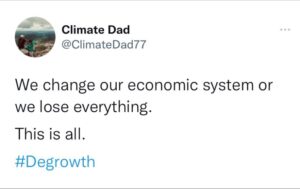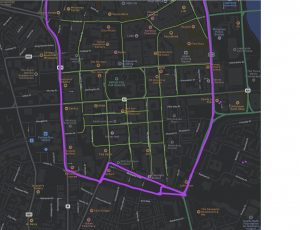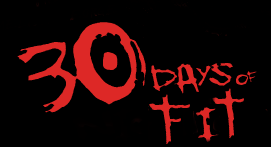Hi, Some of the stuff we were talking about. As you know – I’m funded by InvestNI in assisting media and technology companies in Northern Ireland compete on a global scale. We’ve been looking at areas of “Connected Health (aka Telecare, Telemedicine) to find ways where there can be market pull rather than technology push … Continue reading “An email sent to a senior person in one of NI’s Health Trusts”
Hi,
Some of the stuff we were talking about. As you know – I’m funded by InvestNI in assisting media and technology companies in Northern Ireland compete on a global scale. We’ve been looking at areas of “Connected Health (aka Telecare, Telemedicine) to find ways where there can be market pull rather than technology push for ambient assisted living. We do some work with both the University of Ulster and QUB to find real-world solutions.
We can develop all of this locally with local expertise – we’ve worked hard to develop significant expertise in mobile development (specialising on iPhone and iPad but also including Android and other mobile platforms). Recent developments from DEL have meant there is fully funded training available to qualified organisations in the development of mobile technology plus local businesses are able to avail of innovation vouchers from InvestNI to solve particularly though problems.
And with new guidelines from the Central Procurement Department in the DFP, we’ve been working with DETI to find pathfinder projects for Pre-Commercial Procurement.
We’ve been trying to work with Mencap NI at the moment to find a way where our developers can tie into their perceived needs to provide ambient assistance, travel training, social networks and other products which are slightly more specialised for the individual with learning difficulties. The possibilities are pretty much endless. The idea that an app can ask someone how they feel in the morning (good, bad) and have that reported back and plotted to discover trends is very exciting. The ability to use off-the-shelf hardware to permit safety tracking of vulnerable adults and a social network of carers to assist in the location of a vulnerable adult or child is very close to my heart.
So here are some of the links to give you an idea of what we’re talking about. Very happy to talk to people who are interested in this.
Fred Wilson, Union Square Ventures.
http://cimota.com/blog/2009/08/12/global-social-open-mobile-playful-intelligent-and-instantaneous/
As ‘media’ has become disruptive – are there other industries that can be end-to-end digital: created, distributed and consumed – without ever becoming atoms.
Fred suggests:
Consumer Finance – money is already just bits. Why do we still use cash?
Education – education is interactivity, media, straight to the brain. The web as a textbook.
Energy – smart power in the home, renewable energy creating peer-produced micro-grids
Healthcare – self-care reporting, digital doctors, sharing data worldwide about pandemics?
Government – procurement, defence, law enforcement, entitlement, planning, crowd-sourcing?
Think about these areas: they’re incredibly disruptive to large organisations. To banks, schools and universities, power companies, hospitals and health trusts and, of course, the government itself.
The Fund for NHS Innovation
http://www.e-health-insider.com/news/4788/money_found_for_nhs_innovation
Health minister Lord Darzi has unveiled a package of measures to encourage and spread innovation in the NHS.
…
The Department of Health is creating a £20m prize fund to encourage people working inside and outside the NHS to combat the key health issues facing the nation.
DH information says: The funds will focus largely on promoting innovation in healthcare delivery, health improvement and patient engagement rather than the development of new medicines or devices, for which funds are already available.
New mental-health apps for iPhones like a ‘therapist in your pocket’
http://www.theprovince.com/health/mental+health+apps
The new apps let users track their moods and experiences, and either get instant advice on how to change negative affective states or assist mental-health-care providers with making psychological assessments.
“It gives me an additional source of rich information of what the patient’s life is like between sessions,” University of Pennsylvania researcher Dimitri Perivoliotis told NPR. “It’s almost like an electronic therapist, in a way, or a therapist in your pocket.”
A Doctor’s Review of Rounds with An iPad
http://www.medcitynews.com/2010/06/a-doctors-review-of-rounds-with-an-ipad/
For any provider who is highly mobile this blows the doors off of the COWs (computer on wheels) which is like rolling a file cabinet around. It’s faster, more reliable, insanely long battery life, and goes up stairs (although I have often thought of testing the ’down the stairs’ mode on the COWS when they run out of batter halfway through rounds on CC7) this is the machine to get. If you are office based, there isn’t a reason for this, but if you round on more than a few patients, then it will be invaluable.
iHelp for Autism – from SFWeekly
http://www.sfweekly.com/2010-08-11/news/ihelp-for-autism/all/
Leo is Rosa’s 9-year-old son, and when people ask her about him, she is mindful to explain him in a way that will set appropriate expectations. He is a boy with intense autism, she says. He is not conversational, he learns very slowly, and he has been prone to violent outbursts.
…
Though scrolling through the icons is easy for most users, the device was not created with special-needs consumers in mind.
So when Leo took it in his small hands as if it were an old friend, and, with almost no training, whizzed through its apps like a technology virtuoso, his mother gasped in amazement. After he began spending 30 minutes at a time on apps designed to teach spelling, counting, drawing, making puzzles, remembering pictures, and more, she sat down at her own computer.
iPhone’s VoiceOver Helps A Blind Person “See”
http://behindthecurtain.us/2010/06/12/my-first-week-with-the-iphone/
Last Wednesday, my life changed forever. I got an iPhone. I consider it the greatest thing to happen to the blind for a very long time, possibly ever. It offers unparalleled access to properly made applications, and changed my life in twenty-four hours. The iPhone only has one thing holding it back: iTunes. Nevertheless, I have fallen in love.
…
I have seen a lot of technology for the blind, and I can safely say that the iPhone represents the most revolutionary thing to happen to the blind for at least the last ten years. Fifteen or twenty years brings us back to the Braille ‘n Speak, which I loved in the same way, so have a hard time choosing the greater.
…
The other night, however, a very amazing thing happened. I downloaded an app calledColor Identifier. It uses the iPhone’s camera, and speaks names of colors. It must use a table, because each color has an identifier made up of 6 hexadecimal digits. This puts the total at 16777216 colors, and I believe it. Some of them have very surreal names, such as Atomic Orange, Cosmic, Hippie Green, Opium, and Black-White. These names in combination with what feels like a rise in serotonin levels makes for a very psychedelic experience.
…
The next day, I went outside. I looked at the sky. I heard colors such as “Horizon,” “Outer Space,” and many shades of blue and gray. I used color cues to find my pumpkin plants, by looking for the green among the brown and stone. I spent ten minutes looking at my pumpkin plants, with their leaves of green and lemon-ginger. I then roamed my yard, and saw a blue flower. I then found the brown shed, and returned to the gray house. My mind felt blown. I watched the sun set, listening to the colors change as the sky darkened. The next night, I had a conversation with Mom about how the sky looked bluer tonight. Since I can see some light and color, I think hearing the color names can help nudge my perception, and enhance my visual experience. Amazing!



